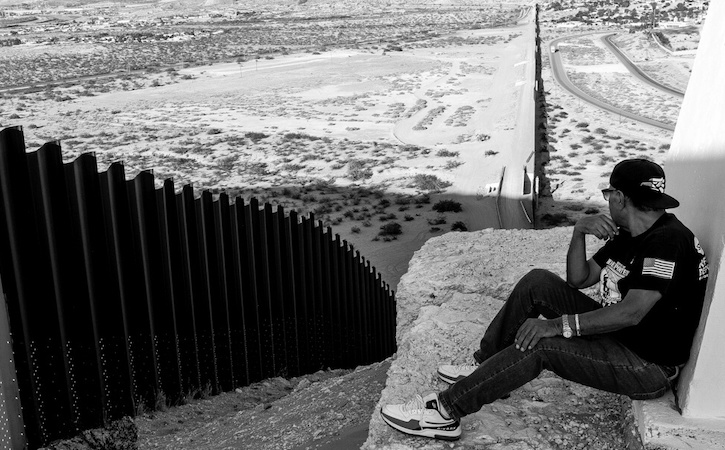Student Joel Angel Juárez Captures the Lives of Exiled U.S. Veterans in Photos

If a true journalist shines a light into dark corners, then San Francisco State University senior Joel Angel Juárez is off to a good start. Funded by a Department of Journalism grant, the photojournalism major has already traveled around the world in pursuit of images of an often-forgotten group: deported U.S. military veterans.
“It wasn’t getting a lot of media attention, so I felt the need to tell the story,” said Juárez, who is a first-generation son of Mexican immigrants. “The grant gave me the opportunity to meet more of these veterans and get connected to their whole community. That’s kind of where it took off.”
Juárez won the $5,000 Francisco Ortiz Photojournalism Grant (named after the former San Francisco State faculty member and award-winning photographer) last summer. But for him, the project was initially self-supported, and began a year earlier when he read a news article about U.S. Army veteran Hector Barajas-Varela, who had been deported 14 years earlier.
“I was kind of shocked. A deported military vet? That didn’t make sense to me,” Juárez recalls. “So I did the research and looked into the issue, and it was true.”
Juárez decided to do something.
He took the six-hour drive down from his hometown of Oxnard to meet the veteran at the border between San Diego and Tijuana, an area known as Friendship Park. While there, Juárez says the El Faro Border Church hosted a mass at the park for deported immigrants and their families where the border between fathers and sons is a chain-link fence and human contact is relegated to a faint touch of the fingertips.
“You have a pastor on both sides of the fence, and they do the mass together,” said Juárez. “It’s one of the most fortified parts of the whole fence. The way you shake hands is with your pinky.”
After Juárez and Barajas-Varela met, the Army veteran and founder of the advocacy group Deported Veterans Support House, was instrumental in connecting Juárez with other deported veterans in Mexico and Haiti. He even traveled with Juárez to the Dominican Republic to meet more vets.
“It’s nice to see the younger generation get involved,” said Barajas-Varela. “He went above and beyond. For him to travel and to really cover this issue, something people usually get paid to do, I think that’s commendable.”
According to the National Immigration Forum, an immigrant advocacy group, around 40,000 immigrants serve in the U.S. military, most being lawful permanent residents. Juárez says each deported veteran has a different story, but most have been exiled upon completion of a criminal sentence after being discharged.
“There’s veterans deported to over 30 countries,” Juárez said. “Sharing their stories, I guess it brings awareness and attention to them, but the images alone aren’t going to change the world. It’s really about people taking action and what legislation is being passed.”
Most recently, the U.S. Department of Defense may have made it even harder for immigrant service members to maintain citizenship, requiring foreign nationals to serve at least 180 consecutive days of active duty or complete a year of reserve service to be eligible for naturalization. Eligibility was previously contingent on one day of service.
“We’ve seen things slowly move forward with the deported military vets, like Prop 47, which turned certain felonies into misdemeanors. But there is still a long road ahead,” said Juárez.
This September, Juárez presented his pictures to the Department of Journalism. He credits his development as a photographer to department faculty including one of his mentors, Assistant Professor and Pulitzer Prize-winning photojournalist Kim Komenich.
“He’ll call me up and say, ‘I’m going to take photos at the Dakota Access Pipeline so I won’t be in class today,’” said Komenich. “Joel just has this hunger and drive to do work that matters.”
Juárez says he has built lifelong relationships with the veterans he met and plans to continue his coverage of vet deportations.
“I’m really interested in seeing what the factors are behind the deportations — looking at their time in the service and the real issues that are not being talked about,” he said. “No project is ever finished. There’s always another chapter to a story. Life doesn’t stop.”
— Ivan Natividad
Links
Photo: Deported U.S. Army veteran Jose Francisco Lopez Moreno overlooks the fence separating him from the United States. Photo by Joel Angel Juárez.